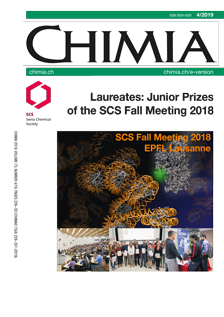Quantifying Isotopic Signatures of N₂O Using Quantum Cascade Laser Absorption Spectroscopy
DOI:
https://doi.org/10.2533/chimia.2019.232PMID:
30975249Keywords:
Biogeochemical nitrogen cycle, Clumped isotopes, Greenhouse gas, Laser spectroscopy, Nitrous oxideAbstract
Nitrous oxide, N2O, is the environmentally most relevant constituent of the biogeochemical nitrogen cycle. Human activities, e.g. the agricultural use of mineral fertilizers, accelerate nitrogen transformations, leading to higher emissions of this strong greenhouse gas. Investigating the stable isotopic composition of N2O provides a better understanding of formation mechanisms to disentangle its variable source and sink processes. Mid-infrared (mid-IR) laser spectroscopy is a highly attractive technique to analyze N2O isotopocules based on their specific ro-vibrational absorption characteristics. Specifically, quantum cascade laser absorption spectroscopy (QCLAS) in combination with preconcentration has shown to be powerful for simultaneous and high-precision analysis of the main N2O isotopocules. Recently, in the scope of my PhD project, we have been advancing this analytical technique for the analysis of the very rare doubly substituted N2O isotopic species 15N14N18O, 14N15N18O, and 15N15N16O, also known as clumped isotopes. Currently, we are investigating the potential of these novel isotopic tracers to track the complex N2O production and consumption pathways. Improved understanding of the nitrogen cycle will be a major step towards N2O emission reduction.
Downloads
Published
Issue
Section
License
Copyright (c) 2019 Swiss Chemical Society

This work is licensed under a Creative Commons Attribution-NonCommercial 4.0 International License.







